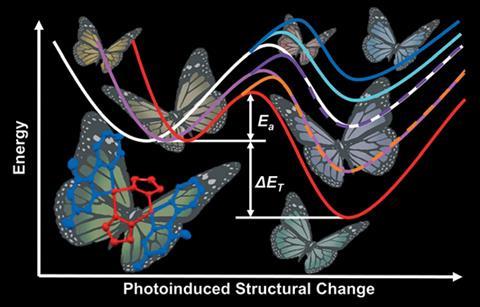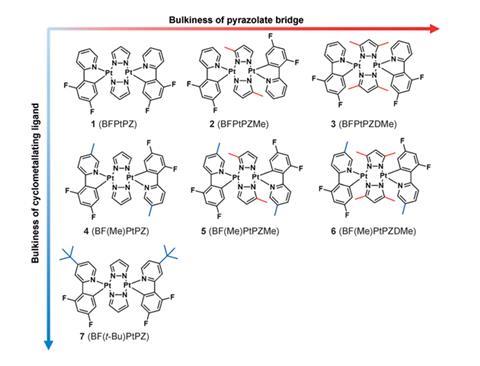Colours of dual light emissions can be controlled by design

Shining light on certain molecules excites them to a higher energy level and the extra energy can induce a change in molecular structure, like a contraction or a flattening, and phosphorescence emission. So far, scientists have been unable to exercise precise control of the process. But researchers from Florida State University, US, have now designed ‘butterfly’ platinum complexes, consisting of a central body with ligand wings, that can undergo tuned structure changes to ‘flap’ their wings and phosphoresce in one colour when their wings are open and another when they are closed.

The team suggests that the finding can be used to improve white LEDs and create different kinds of sensors. ‘With multiple emissions we can get a single molecule broadband emission. This can be used in [LEDs] – we could get white light out of a single molecule,’ Ma says. ‘We can also use this as a sensor for phase changes … and as a temperature sensor.’
‘This is molecular engineering at its best,’ says Philip Coppens from State University of New York at Buffalo in the US. ‘An interesting structural detail is that the “wings” of the “butterfly” fold on the transition between the two differently emitting states. It points the way to developing materials with desired properties.’












No comments yet